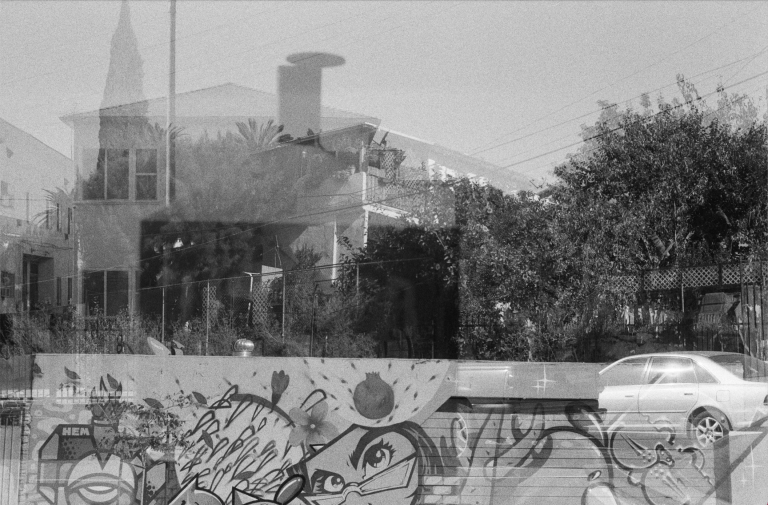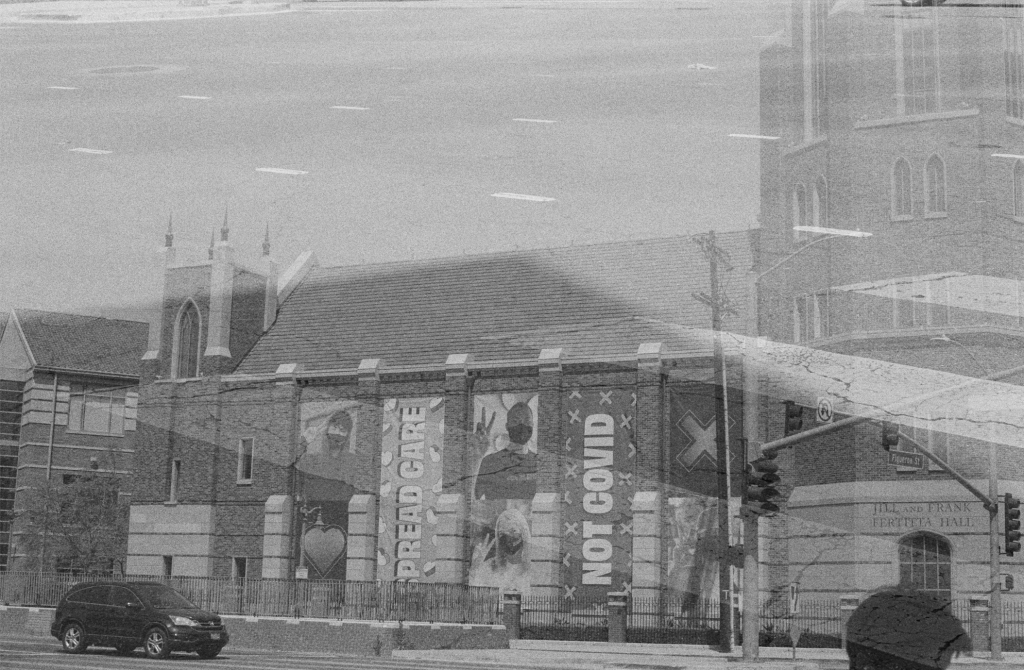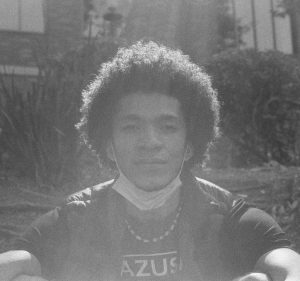Landlord Harassment & Illegal Eviction
Executive Summary
The USC Price Center for Social Innovation analyzed data about civilian calls to police provided by the Los Angeles Police Department (LAPD) from 2010 to 2021. The analysis covered a subset of calls to police related to landlord/tenant conflicts to better understand instances of landlord harassment and illegal eviction in the City of Los Angeles. We furthermore submitted a California Public Records Act (CPRA) request to the LAPD, to retrieve textual data on these call instances to better classify them. This work sought to specify what these police calls meant, where they are geographically concentrated, and how they’ve changed over time, especially during the pandemic. Our findings reveal the extent of landlord harassment and illegal eviction in the City of Los Angeles, even while formal eviction prevention policy has been implemented.
We conceptualize landlord harassment as a collection of coercive measures that landlords/property managers may take in order to displace a tenant, to coerce them into rent payment, or to make their home unlivable. A full list of illegal landlord harassment conduct can be found on the Los Angeles Housing Department’s (LAHD’s) Tenant Anti-Harassment Ordinance (TAHO) page (Los Angeles Housing Department, 2022). Illegal evictions are instances where tenants are removed from a property by a landlords’ use of force or coercion – these evictions occur outside of the courts, and therefore outside of the legal process that tenants are entitled to by law when facing eviction. In our understanding, harassment is a spectrum of conduct that ranges from written or verbal threats on one end to illegal lockouts on the other end (Brennan, 2020).
While there’s a clear disparity in where these cases of tenancy vulnerability occur: predominantly in lower-income communities of color – our findings reveal that there are few areas in the city that are untouched by landlord maltreatment of tenants. It’s apparent that landlord harassment and illegal eviction are a part of a broader apparatus of inequality that tenants face, and therefore, ensuring housing stability means creating an infrastructure to prevent harassment and illegal eviction, while commensurately ensuring that tenants who face formal eviction have protective measures, as well. Our key findings and recommendations are below. Key Findings:
- The vast majority of calls to police related to landlord-tenant conflict are cases of landlord harassment/illegal eviction
- Specifically, just under half of the total calls represent cases of illegal eviction, and
- Specifically, just under ⅓ of the total calls are initiated by landlords against tenants
- Landlord harassment and illegal eviction has occurred predominantly in South LA and in the San Fernando Valley
- April and December 2020 – some of the most tumultuous moments of the COVID-19 pandemic – saw a decade-high spike in instances of landlord harassment and illegal eviction
- A typical year sees ~7,900 calls to the police related to landlord harassment and illegal eviction
- The vast majority of calls to police related to landlord-tenant conflict are cases of landlord harassment/illegal eviction
Key Recommendations:
Strengthen, fully fund and deliberately implement the Tenant Anti-Harassment Ordinance, which was passed by the LA City Council in the summer of 2021 – this would both deter and help tenants defend themselves against landlord harassment and illegal eviction
Establish a Right to Counsel, a civil right that would affirm every tenants’ access to legal representation in the case of their eviction – this would reduce eviction filings, reduce the number of tenants evicted through the court, reduce homelessness, and save the City and County of LA millions of dollars annually (Stout Risius Ross, 2019)
Permanently limit evictions for nonpayment of rent – the COVID-19 pandemic has shown that government protections may limit eviction for nonpayment of rent and not unduly burden landlords
Establish a Tenant Bill of Rights in the City and County of LA – this bill would include just-cause eviction protections, rent-stabilization for all eligible units, tenant anti-harassment protections, tenant anti-discrimination ordinances, and code enforcement to address substandard housing
Establish a permanent Rent Relief Program, which would support tenants facing court-based eviction through non-payment of rent, by helping them pay their back rent
Establish a permanent framework for Tenant Clinics and Education, which would provide tenants with education about their rights so that they can be empowered by and aware of their rights
*These policy recommendations come from the Keep LA Housed Coalition’s platform to strengthen permanent tenant protections in Los Angeles following the COVID19 pandemic. The Keep LA Housed Coalition is made up of tenants, community based organizations, public policy advocates, and non profit legal service providers. The coalition formed early in the pandemic to address COVID19 rent debt and to ensure a just recovery for low-income tenants across LA County (Keep LA Housed, 2021).

Photograph by Joshua Cantong (2021)
Introduction
Tenants across the United States have experienced a mounting level of social insecurity in the midst of the global pandemic. Even before the pandemic and its resulting recession, tenants in Los Angeles and in other urban areas around the nation were struggling under immense housing prices, low wages, high rent burden, and an elevated risk of displacement (Sisson et al., 2020). Outside of the facets of the affordable housing crisis which exists in urban areas around the nation, rural areas, particularly in the South, experienced some of the highest eviction rates in the nation in the years before the pandemic (Blau, 2019). The vulnerability of tenancy, then, is something experienced across the nation, and which no sole geography has a particular monopoly on. These issues surrounding tenancy vulnerability – rent-burden, stagnant wages, eviction, and the afterlives of eviction (physical and mental health impacts, residential instability, residence in poorer geographies, and discrimination in the housing market from ones’ eviction records) – matter severely for the status of life, the quality of life, and the opportunity within life for those who have prior been subject to these structural ailments (USC Sol Price Center for Social Innovation, 2019; Desmond, 2012). In discussing the what of the problem, it’s essential to understand the who of the problem, through an intersectional frame. These multiplicitous issues surrounding housing and socio-economic status – eviction, coercive eviction filing, harassment, etc. – were and are still disproportionately experienced by BIPOC communities, particularly Black women and Latina lower-income renters (Hepburn et al., 2020). This page focuses on the problem of landlord harassment and illegal eviction in Los Angeles over the last decade, and specifically on these forms of tenant insecurity since the beginning of the pandemic.
During the pandemic, many tenants who were unable to pay their rents were threatened by eviction, despite having municipally (as well as state or federally) declared eviction moratoria that granted them housing security on paper. Illegal eviction was hard to specifically quantify throughout this time period, and even generally, formal eviction data themselves are difficult to gather, especially in California (Cheng, 2021). Although in the earlier segment of the pandemic we didn’t have a granular and comprehensive account of illegal eviction, more recently published work has established that illegal evictions increased drastically over this period and that many tenants were subject to landlord harassment and illegal eviction (Zainulbai, Daly, 2022). Work from the LA Times (Dillon, Poston, 2020) established that in the first ten weeks of the pandemic following the mayoral order to cease evictions, there was a 17% increase in landlord/tenant dispute 911 calls. These calls represent landlords’ harassing tenants, which also include landlords or property managers illegally evicting tenants. They also noted that these calls were predominantly concentrated in South LA. Internally, the Eviction Defense Network noted that in the first half-year of the pandemic, illegal eviction cases had increased by 75%, and landlord harassment cases more generally increased by 352% (Eviction Defense Network, 2020). In light of this, we sought to track tenant vulnerability through quantifying illegal eviction and landlord harassment more generally, throughout the pandemic period, and before the pandemic period. The present analysis then builds off of the work of the LA Times (Dillon, Poston, 2020). In our analysis, we categorize and clarify these calls through text analysis, visualize them on a neighborhood map over the last decade, and plot a time series of these calls over the last decade. The results are striking and speak towards advocates’ claims that we should move deliberately towards establishing a Right to Counsel, a permanent Rent Relief Program, a permanent arrangement of eviction prevention measures, as well as judicial reforms in the way that Unlawful Detainers (or eviction suits) are processed in court. The findings furthermore speak towards the importance of strengthening the Tenant Anti-Harassment Ordinance (TAHO) in the City of Los Angeles, and expanding the infrastructure to prevent both illegal evictions that occur outside of the court, and also formal evictions that occur within the court.

Apartment housing in Rampart Village. Landlord harassment and illegal eviction are concentrated in South Los Angeles and some neighborhoods in the San Fernando Valley. Although this is the case, tenants from nearly all neighborhoods across the City of Los Angeles, including the one depicted above, are subjected to the harms of landlord harassment & illegal eviction, and the processes that accompany it. Photograph by Joshua Cantong (2021)
Methods & Initial Findings
In a given year, there are around 7,900 911 Calls for “landlord/tenant disputes” in the City of Los Angeles (average taken from 2010 to 2021). We also call these 911 calls for landlord/tenant disputes: tenancy calls. It’s important to note that these calls cannot be seen as a quantitative whole of all of the instances of landlord harassment and illegal eviction in Los Angeles. Using these tenancy calls as the entire universe, or population, of harassment and lockout cases, would undercount the tenant insecurity that has defined the landscape of Los Angeles and many areas across the nation during the pandemic, and before the pandemic. It is the more accurate conclusion that these tenancy calls are a mere fraction of the total degree of landlord harassment and illegal eviction that Los Angeles sees in any given year. Tenants, and specifically tenants of color, may be less likely to call the police during every instance wherein they experience landlord harassment or specifically illegal eviction, and therefore this data might fail to take the whole of these instances into account. Moreover, these calls don’t record cases of informal eviction that are muted to such a degree that the tenant doesn’t call the police. In such instances, a tenant might move following an illegal eviction notice from a landlord, or through verbal or written threats from the landlord – in these cases, it’s still important to remember that this is still a form of forced displacement, even if the landlord didn’t physically lock the tenant out of their residency (Brennan, 2020).
In order to specify what these calls represented, exactly, we gathered textual data from the Los Angeles Police Department through a California Public Records Act (CPRA) request, and with this data, we were able to classify them. Nearly all of these tenancy calls are cases of landlord harassment of tenants, generally (which includes a spectrum of behavior that ranges from verbal threats, entering a tenants’ unit without due notice, shutting off a tenants’ utilities, and/or locking them out). We define landlord harassment as a collection of coercive measures that landlords/property managers may take in order to displace a tenant, to coerce them into rent payment, or to make their home unlivable. Our analysis furthermore finds that just under half of these calls signify instances where landlords illegally evict tenants. An illegal eviction may include landlords shutting off tenants’ utilities (electricity, water, gas, etc.), removing infrastructure within the unit (removing doors, windows, toilets, etc.), and/or removing the tenants’ property from inside the unit (or alternatively, keeping the tenants’ property within the unit, which leaves the tenant with nothing when they are ultimately locked out). The illegal eviction process ultimately concludes with the property owner or manager changing the locks of the unit, and in some cases boarding up the unit so that the tenant cannot get back in. As stated above, illegal eviction is a process that may include other forms of harassment, and that ultimately ends with a tenant being locked out of, or forced to vacate, their home (Brennan, 2020). These calls are a representation of a necessarily violent phenomenon.



Photographs by Joshua Cantong (2020-2021)
Variations Across the Region
An understanding of these data is incomplete without an understanding of where they are geographically concentrated, and therefore what communities they impact disproportionately. Furthermore, an understanding of these data is served well from an analysis of not only their static representation in a single year but an analysis of how they’ve changed over time. Through our analysis of the rates of these calls (we use rates by total housing units to control for density, but still visualize total counts for the public record, in the following cartography), we find that South LA and South East LA are the geographies that are most heavily impacted by these cases of landlord maltreatment of tenants. These findings are consistent with previous scholars’ analysis of formal court-ordered eviction data and their geographic concentration in Los Angeles, as well (Lens at al., 2020; Nelson et al., 2021). Specifically, the neighborhoods of Florence, Vermont Vista, Broadway-Manchester, and Green Meadows, have the highest tenancy call rates in the city in most years. Beyond South Los Angeles, the next region of the city which has a higher degree of tenancy calls is the San Fernando Valley. This area is subjected to higher rates and especially counts, of landlord/tenant maltreatment. In the San Fernando Valley, Pacoima and Sun Valley specifically see some of the highest rates of tenancy calls in their region of the City of Los Angeles. Through an analysis of the cartography, or the places that characterize these calls, we find that landlord harassment and illegal eviction impact predominantly Black and Latine geographies.
Variations Over Time
We now turn to our over-time analysis of these calls. Earlier we spoke about the increase in tenancy vulnerability, especially during the first part of the pandemic. Many tenants had lost employment, the virus was spreading, the Safer at Home order was instituted, eviction prevention policies (ie. eviction moratoria) were instated, and landlords were unable to formally collect rent (Blasi, 2020). Landlords’ inability to collect rent, and their inability to evict tenants formally through the courts, led to an increase in the number of instances of landlord harassment and illegal evictions in 2020 (Ali, 2020; Ballinger, Berlanga, 2021). Many legal service providers and tenant community organizers (from LATU to the Right to Counsel Coalition) have noted that there has been an increase in landlord harassment and illegal lockouts in the City of Los Angeles, and our findings validate those claims.
In the visualization below, there are three distinct lines that represent three different years. (The year labeled “2010” is an average of the last decade, comprising the average of the years from 2010 to 2019 specifically. In this way, the grey line can be used as a baseline that represents a “typical year.”) An analysis of tenancy calls over time reveals that 2020 had some of the highest call counts over the last decade in the City of Los Angeles at various points of time in the year. On the other hand, 2021 seems to have similar or lower tenancy call counts as other years. This around average or slightly less than average number of calls in 2021 may be due to California’s COVID-19 Rent Relief program, which allowed landlords to collect rents, and which therefore may have worked to limit the principle which motivated the heightened level of harassment and illegal evictions in the prior year (CA Covid-19 Rent Relief, 2022). Despite this, the number of tenancy calls that represent landlord harassment and illegal eviction of tenants is still quite high this year. In a given month in 2021, there are around half a thousand tenants experiencing landlord maltreatment or illegal eviction in the City of Los Angeles.
A further examination of the data reveals that tenancy calls in 2020 spiked in April, settled in June, and then rose for a 12-year high in the month of December. The reduction in calls for landlord/tenant disputes in June may have been in connection to George Floyd’s Rebellion, which began in late May 2020 and continued into June 2020 and the subsequent months of the year (Taylor, 2021). In the month of April of 2020, there were 785 calls representing landlord harassment and illegal eviction, whereas in our typical or decade-averaged year there were 590 recorded calls in that month. We can therefore note that there was an increase in tenancy calls in April 2020 of 33% from the typical year. In the last week of December 2020, there were 596 calls representing instances of landlord harassment or illegal eviction, whereas, in the average year, there are 127 calls. In this case, we can observe that there was an increase in tenancy calls in the last week of the year in 2020 of 369% from what we’d expect to see in a typical year. Why was there a sharp increase in tenancy calls in late 2020? While we don’t know entirely, we’ve considered that this late-year spike could be reflective of landlords’ uncertainty in regard to tenant protections and their extension into the new year – landlords may have felt that they needed to harass or illegally evict tenants that they hadn’t been able to get out of their properties during the extent of the pandemic, before the beginning of the new year.
By observing this data, we can note that tenants were struggling and being dispossessed of their homes, despite different scales of government instituting eviction prevention policy. This isn’t a reason to conclude that the formal eviction prevention policy (like the closure of the courts, the decrees of eviction moratoria, etc.) wasn’t effective. Rather, we should take this data as a trace of tenants’ experiences, which points towards the necessity of strengthening both formal eviction prevention policies, and eviction prevention policies that are geared towards illegal eviction and landlord harassment.
Conclusion
We have found that tenants have experienced a heightened degree of landlord harassment and illegal eviction during the pandemic. Based on our review of textual incident summaries of a sample of these calls (N = 293), and on preliminary interviews with tenants, our analysis suggests that the Los Angeles Police Department (LAPD) plays a central role in instituting or reifying these practices, working in an expressive capacity to aid property owners in their acts of illegality, or in a non-acting capacity by allowing landlords to remove tenants from their homes, and by allowing tenants’ basic protections, as outlined by California state and municipal statutes, to be abandoned within their view (eg. California Penal Code §418, California Civil Code §789.3, L.A. City Municipal Code §41.33).
In light of the upcoming annual review of the Tenant Anti-Harassment Ordinance (TAHO), which enables tenants in the City of Los Angeles to file a civil lawsuit against their landlords for harassing or illegally evicting them, some community representatives have proposed that the City of LA works to continually expand this ordinance, to give it more teeth, and ensure that it is well implemented, while concurrently working to expand a Right to Counsel for tenants who face eviction formally through the courts. Either measure would respectively work to limit evictions and expand housing security on the illegal eviction front, while also reducing eviction filings and tenants’ success in court, on the formal eviction front (Stout Risius Ross, 2019; Hicks, 2021; The Times Editorial Board, 2021; Keep LA Housed, 2021). Similarly, others have also noted that the City and County of LA should work together to create an infrastructure for tenants to have protections from these informal aspects of landlord maltreatment, which contributes to displacement, gentrification, residential instability, and homelessness. Over the last decade, a view of the data is clear: illegal eviction and landlord harassment are forms of inequality that work alongside as well as on the hidden aspect of formal eviction, and are drastically impactful for families who experience them. If we want to ensure a recovery from the pandemic that also seeks to unravel the original conditions of inequality that low-income people of color have experienced before the pandemic, then – in the context of housing and eviction – it’ll be necessary to account for tenancy vulnerability both on its extra-juridical and juridical fronts; to ensure that tenants have protections against harassment and illegal eviction outside of court, at the same time that they have access to an attorney when they face formal eviction in court.

Joshua Cantong
Joshua Cantong (he/them) is a second-year Master of Public Policy (MPP) candidate at Price, with a concentration in Urban Spatial Analysis. As a Graduate Research Assistant at the USC Sol Price Center for Social Innovation, Josh works specifically within the Neighborhood Data for Social Change (NDSC) initiative.
Published: February 28, 2022 12:00 AM PST; Updated: March 22, 2022 4:00 PM PST, to more explicitly credit the incredible work of the Keep LA Housed Coalition
Sources
Ali, S. F. (2020). Some Landlords Are Using Harassment, Threats to Force Out Tenants During COVID-19 Crisis. NBC News. Retrieved from https://www.nbcnews.com/news/us-news/some- landlords-are-using-harassment-threats-force-out-tenants-during-n1218216
Ballinger, D., Berlanga, M. (2021). Opinion: Landlords are Getting Around California’s Eviction Moratorium with Harassment. The San Francisco Chronicle. Retrieved from https://www.sfchronicle.com/opinion/openforum/article/Open- Forum-How-landlords-are-getting -around-16221252.php
Blau, M. (2019). Black Southerners Are Bearing the Brunt of America’s Eviction Epidemic. The Pew Charitable Trusts. Retrieved from https://www.pewtrusts.org/en/research-and-analysis/blogs /stateline/2019/01/18/black-southerners-are-bearing-the-brunt-of-americas-eviction-epidemic
Blasi, G. (2020). UD Day: Impending Evictions and Homelessness in Los Angeles. UCLA Institute on Inequality and Democracy. Retrieved from https://challengeinequality.luskin.ucla.edu/ 2020/05/28/ud-day-report/
Brennan, M. (2020). A Framework for Effective and Strategic Eviction Prevention. Mitchell Hamline Law Journal of Public Policy and Practice: Vol. 41 : Iss. 3, Article 9.
CA Covid-19 Rent Relief. (2022). Retrieved from https://housing.ca.gov/covid_rr/
Cheng, F. (2021). Why It’s So Hard to Gauge the Extent of California’s Eviction Crisis. New America. Retrieved from https://www.newamerica.org/future-land-housing/blog/why-its-so-hard-to-gauge- the-extent-of-californias-eviction-crisis/
Desmond, M. (2012). Eviction and the Reproduction of Urban Poverty. The American Journal of Sociology, 118(1), 88–133. https://doi.org/10.1086/666082
Dillon, L., Poston, B. (2020). Despite protections, landlords seek to evict tenants in Black and Latino areas of South L.A. The Los Angeles Times. Retrieved from https://www.latimes.com/ homeless-housing/story/2020-06-18/despite-protections-landlords-attempting-to-evict-tenants-in-south-l-a-black-and-latino-neighborhoods-data-shows
Eviction Defense Network. (2020). Stop Landlord Harassment 10.17.2020.pptx. [Powerpoint Presentation.]
Hepburn, P., Louis, R., Desmond, M. (2020). Racial and Gender Disparities among Evicted Americans. Sociological Science, 7(27), 649–662. https://doi.org/10.15195/V7.A27
Hicks, T. (2021). Antioch Councilmembers Urging Tenant Anti-harassment Ordinance. KTVU. Retrieved from https://www.ktvu.com/news/antioch-councilmembers-urging-tenant- anti-harassment-ordinance
Keep LA Housed. (2021). Recommendations for LA County Tenant Protections After January 31, 2022.
Lens, M. C., Nelson, K., Gromis, A., Kuai, Y. (2020). The Neighborhood Context of Eviction in Southern California. City & Community, cico.12487. https://doi.org/10.1111/cico.12487
Los Angeles Housing Department. (2022). Tenant Anti-Harassment Ordinance. Retrieved from https://housing.lacity.org/residents/tenant-anti-harassment#:~:text=Background,refusing%20to%20accept%20rent%20payments
Nelson, K., Gromis, A., Kuai, Y., Lens, M. C. (2021). Spatial Concentration and Spillover: Eviction Dynamics in Neighborhoods of Los Angeles, California, 2005–2015. Housing Policy Debate, 31(3–5), 670–695. https://doi.org/10.1080/10511482.2020.1847163
Sisson, P., Andrews, J., Bazeley, A. (2020). The Affordable Housing Crisis, Explained. Curbed. Retrieved from https://archive.curbed.com/2019/5/15/18617763/affordable-housing-policy-rent- real-estate-apartment
Stout Risius Ross. (2019). Cost-Benefit Analysis of Providing a Right to Counsel to Tenants in Eviction Proceedings. Retrieved from https://info.stout.com/hubfs/PDF/Eviction-Reports- Articles-Cities- States/Los%20Angeles%20Eviction%20RTC%20Report_12-10-19.pdf
Taylor, B. D. (2021). George Floyd Protests: A Timeline. The New York Times. Retrieved from https://www.nytimes.com/article/george-floyd-protests-timeline.html
The Times Editorial Board. (2021). Editorial: Tenant Protections Are Homeless Prevention. The Los Angeles Times. Retrieved from https://www.latimes.com/opinion/story/ 2021-04-20/tenant-anti-harassment
USC Sol Price Center for Social Innovation (2019). How do Renters Cope with Unaffordability? Retrieved from https://socialinnovation.usc.edu/rent-burden/
Zainulbai, S., Daly, N. (2022). The Evictions That Landlords Got Away With During the Pandemic. Slate. Retrieved from https://slate.com/business/2022/01/evictions-pandemic-informal-data.html

